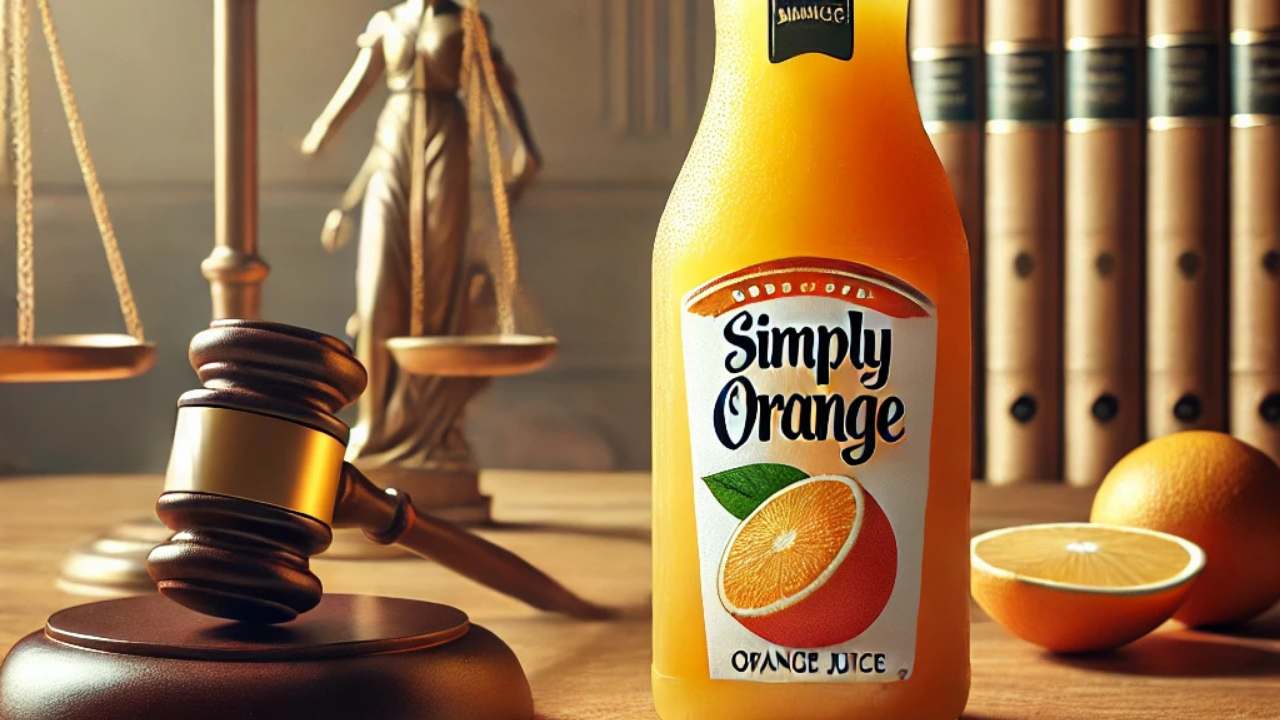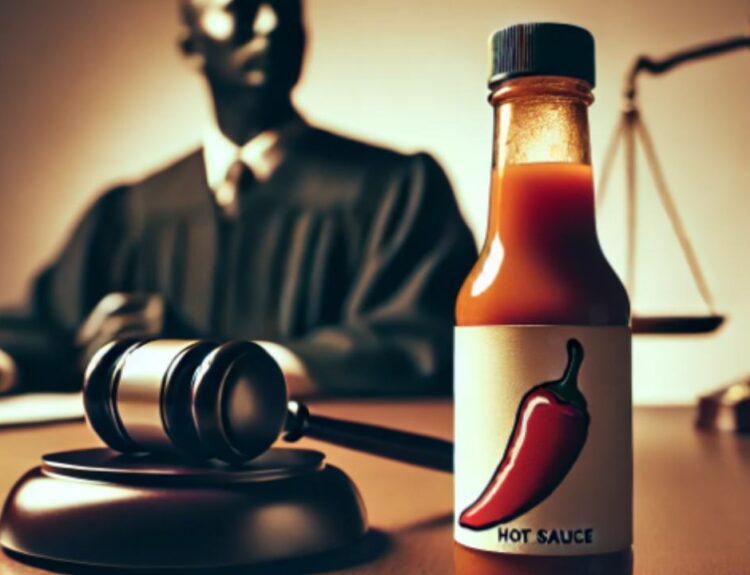You’ve probably seen Simply Orange juice on store shelves, with its clean branding and promises of “all-natural” ingredients. It’s marketed as a healthier choice for you and your family. But right now, the brand is facing a class-action lawsuit that alleges its products are anything but natural.
The Simply Orange lawsuit is raising major concerns about consumer safety, corporate transparency, and how food companies market their products. Class action claims that the juice contains PFAS, those toxic “forever chemicals” we’ve been hearing so much about. Let me walk you through the entire story, so you can understand what’s going on and what it means for you.
Background of Simply Orange Lawsuit
Let’s rewind a bit and talk about how this lawsuit started. It all began with a New York resident named Joseph Lurenz, who filed the initial complaint against Coca-Cola and its subsidiary, Simply Orange Juice Co., in 2022.
His first lawsuit didn’t get very far and was dismissed because there wasn’t enough evidence tying his specific juice purchases to PFAS contamination.
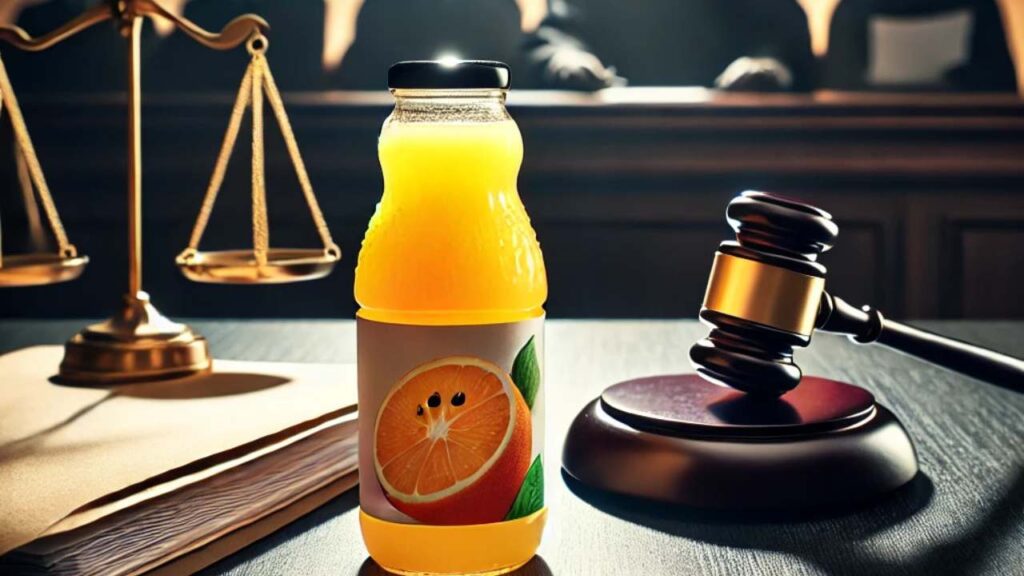
The judge explained that the plaintiff relied on third-party testing of a single sample of Simply Tropical juice but didn’t test the exact product he bought. This lack of direct evidence made it difficult for the court to proceed. The judge also noted that other similar lawsuits had failed for the same reasons.
But Lurenz didn’t give up. He filed a revised complaint on July 9, 2024. This time, the lawsuit included new independent testing results that allegedly showed high levels of PFAS in Simply Orange products.
According to the complaint, this contamination isn’t isolated and it’s systemic, affecting the entire product line. This is what has put Simply Orange and its parent company, Coca-Cola, in the spotlight.
The lawsuit is running in the U.S. District Court for the Southern District of New York, and it’s shaping up to be a major case for Coca-Cola and Simply Orange.
Core Allegations and Coca-Cola’s Market Position
Simply Orange Juice Co., established in 2001, is a subsidiary of Coca-Cola. The company has become a big name in the juice market, raking in over $2 billion in annual retail sales. Their marketing focuses on appealing to health-conscious consumers, with promises of “pure” and “all-natural” products.
The lawsuit alleges that Simply Orange products contain PFAS levels that exceed EPA health advisory limits. Specifically, two types of PFAS, PFOA (perfluorooctanoic acid) and PFOS (perfluorooctanesulfonic acid) were present in their juices.
Researchers found these chemicals extremely toxic and can leads to serious health problems like cancer, cardiovascular issues, and immune system damage.
What makes this worse is Simply Orange’s packaging prominently displays phrases like “all-natural” and “nothing to hide.” The plaintiffs argue that Coca-Cola’s marketing is deceptive, as these chemicals clearly don’t belong in a product labeled as “natural.”
PFAS and Their Associated Health Risks
Here’s the big issue: PFAS are synthetic chemicals that don’t break down in the environment or our bodies, and they’ve been linked to serious health risks.
PFAS, or Per- and Polyfluoroalkyl Substances, are synthetic chemicals that we were using in manufacturing for decades. You can find these chemicals in non-stick cookware, food packaging, firefighting foam, and even water-resistant clothing.
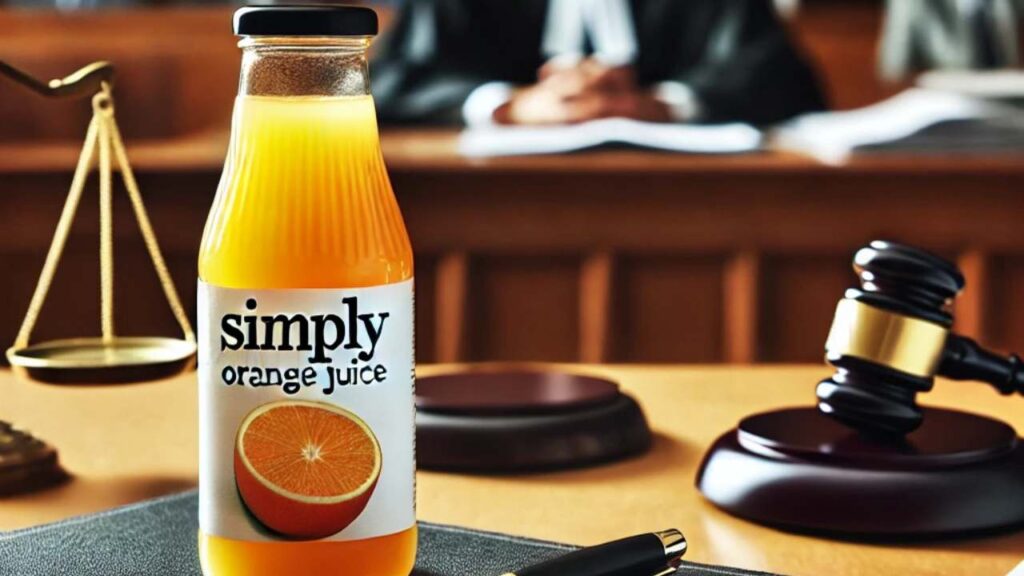
Over time, these chemicals find their way into our soil and water, eventually contaminating the food we eat and drink. What’s worse is that they don’t break down, which is why they’re popular as “forever chemicals.”
According to the CDC, exposure to PFAS can lead to:
- Cancer risks: PFAS exposure is associated with increased risks of certain cancers (especially kidney and testicular cancers).
- Liver problems: These chemicals can damage your liver and affect its ability to process toxins.
- Hormonal imbalances: PFAS can interfere with your body’s natural hormones, which can lead to problems like thyroid disorders.
- Reproductive and developmental issues: Pregnant women and children are particularly vulnerable, with studies linking PFAS to fertility problems and developmental delays.
The EPA has even issued health advisory limits for PFAS in drinking water because of the dangers they pose. So, if these chemicals are showing up in Simply Orange juice, that’s a major problem for anyone drinking it.
The risks don’t stop there. Recent studies have shown links to cardiovascular damage, growth and development issues in kids, and weakened immune responses. It’s no wonder people are so serious about Simply Orange.
Legal Claims and Defense Arguments
The lawsuit filed by Joseph Lurenz includes claims under state and federal consumer protection laws. Essentially, it’s accusing Coca-Cola of breaking these laws by promoting Simply Orange as healthy while failing to disclose the presence of toxic PFAS.
Coca-Cola has responded with a motion to dismiss the case, arguing that the plaintiff hasn’t shown any actual harm or direct evidence that the product he purchased contained PFAS. They also claim that the product’s labeling wouldn’t mislead a “reasonable consumer” and that FDA regulations don’t require companies to disclose incidental substances like PFAS.
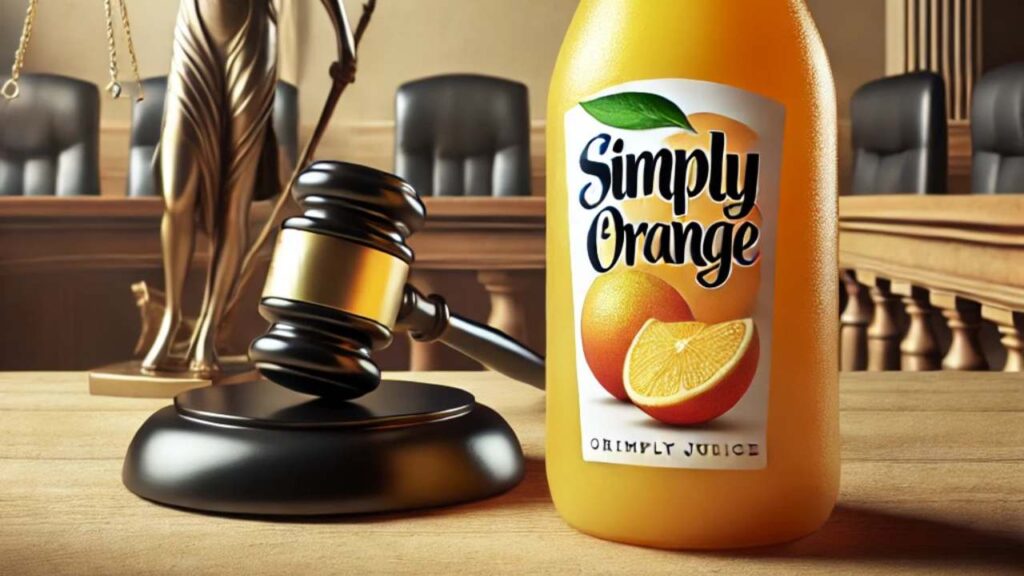
Despite these arguments, Lurenz’s amended complaint still seeks class-action certification. If the case is certified, it would represent thousands and possibly millions of people who purchased Simply Orange products.
- No Proven Harm: Coca-Cola argued that the plaintiff didn’t suffer any harm from drinking the juice. They claimed that he received the product he paid for—orange juice—without any adverse effects.
- Insufficient Evidence: The company pointed out that Lurenz relied on independent testing of one sample, which wasn’t connected to the juice he personally purchased.
- Misleading Marketing Claims: Coca-Cola argued that the “all-natural” label wouldn’t mislead a reasonable consumer. They said it’s ultimately up to the buyer to interpret the marketing.
- FDA Regulations: Coca-Cola stated that PFAS are considered “incidental substances” under FDA rules, meaning companies aren’t required to disclose them.
Despite their arguments, the case is still going on. The court allowed Lurenz to revise his complaint and try again, giving the lawsuit another chance to move forward.
Broader Context: PFAS and Consumer Safety
The Simply Orange lawsuit isn’t happening in isolation. It’s part of a larger trend of consumer lawsuits over PFAS contamination. For example:
- Firefighting foam lawsuits: Thousands of firefighters claim that PFAS exposure caused cancer and other health problems.
- Water contamination lawsuits: Cities allege that PFAS from firefighting foam seeped into their water supplies, making drinking water unsafe.
- Cosmetics and food packaging lawsuits: PFAS is present in everyday products like makeup and storage containers.
The growing awareness of PFAS is putting pressure on regulators, too. Advocacy groups are calling for stricter limits on PFAS in consumer goods, and some states have already started banning these chemicals in certain products. This case against Simply Orange could be a turning point for how food companies handle chemical testing and labeling.
Conclusion: What This Means for You
The Simply Orange lawsuit is a wake-up call for all of us. It’s a reminder to be vigilant about the products we buy and to hold companies accountable when they fail to meet basic safety standards.
Whether you’re a loyal Simply Orange customer or just someone who wants safer food options, this case is worth following. It’s not just about one brand, it’s about protecting our health and ensuring that companies are honest about what they’re selling us.
Let’s stay informed, ask questions, and demand better. After all, you deserve to know exactly what’s in the food and drinks you’re putting on your table.

